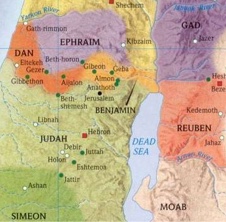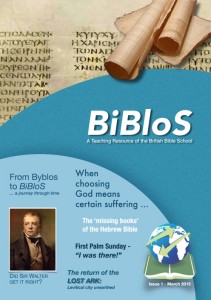When the Israelites entered the land promised by God to their forefathers, Joshua assigned 48 ‘cities’ to the tribe of Levi, as Moses had instructed. One of these cities was Beth-Shemesh, in the territory of Judah (Joshua 15; 21), less than 20 miles west of Jerusalem and overlooking the Sorek Valley where Samson was to meet Delilah (Judges 16). It was in this same valley where the inhabitants of Beth-Shemesh would be reaping their wheat harvest when they saw the ark of the covenant being returned by the Philistines years later (1 Samuel 6).
Judah (Joshua 15; 21), less than 20 miles west of Jerusalem and overlooking the Sorek Valley where Samson was to meet Delilah (Judges 16). It was in this same valley where the inhabitants of Beth-Shemesh would be reaping their wheat harvest when they saw the ark of the covenant being returned by the Philistines years later (1 Samuel 6).
The site has been excavated during three periods in recent times. The first was just over a hundred years ago, in 1911-12, by the Palestine Exploration Fund, with further excavations made by Americans between 1928-33. More recently, since 1990, the site has been excavated on a more or less annual basis under the directorship of Shlomo Bunimovitz and Zvi Lederman of Tel Aviv University. Dale Manor of Harding University in America serves as field director, and was my initial point of contact with the dig.
Excavations at Tel Beth-Shemesh have revealed occupation from at least as far back as the Middle Bronze Age (from about 1800 B.C.) when Canaanites occupied the land, continuing until Iron Age II when the Assyrians destroyed the city in 701 B.C., with only minor occupation subsequent to that. During the Late Bronze and Iron Ages, Tel Beth-Shemesh found itself at the geographic meeting point of three different ethnic and cultural groups: Canaanites, Israelites and Philistines, making the site particularly interesting as a scene of significant historical events and cultural changes.
The constant view north across the Sorek Valley was most evocative. From the pass in the west leading towards the land of the Philistines from which the ark returned, to the site of Timnah and its associations with Judah, Tamar and later Samson, there was much to occupy the mind. If only these stones would speak!
Patrick Boyns
 This article is from BiBloS, a teaching resource of the British Bible School. To read more articles or download the whole of Issue 1, click here.
This article is from BiBloS, a teaching resource of the British Bible School. To read more articles or download the whole of Issue 1, click here.

